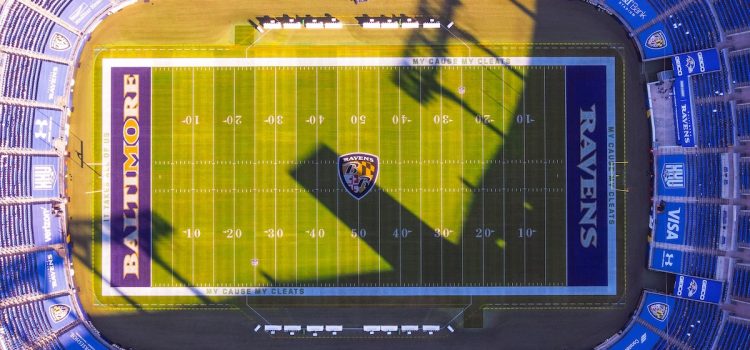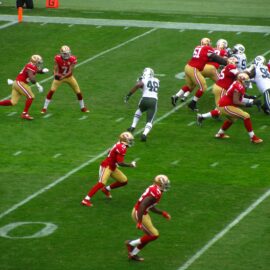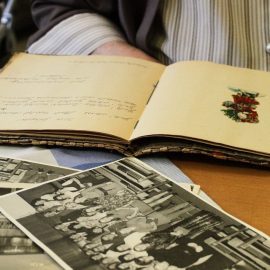

This article is an excerpt from the Shortform book guide to "The Blind Side" by Michael Lewis. Shortform has the world's best summaries and analyses of books you should be reading.
Like this article? Sign up for a free trial here .
Where’s Michael Oher today? How did he respond to his situation and his success? What’s happening between him and the Tuohys?
After Michael Oher’s story was told in The Blind Side, he got a college degree, played in the NFL, and wrote and published two books about his life and career. And, his relationship with the Tuohys has hit some troubled waters.
Read more to learn about Michael Oher today and how his story continues to unfold.
Michael Oher: Today and Ongoing Legacy
Michael Oher gained fame when his story was told in the popular book and film The Blind Side. So, where’s Michael Oher today? We’ll look at where life took him with respect to his college days, his NFL career, his relationship with the Tuohys—and how he perceives his past and his success.
Lewis writes that Oher has a hard time admitting that anything that happened to him contributed to his success. He knew from early on that he was going to be a big athletic star, and he saw his rise as merely the fulfillment of his destiny. But, the truth isn’t quite so fantastic or simple.
Michael may have been born with an athletic gift that made him ripe to be a star, but his path to the NFL was by no means a sure thing. He had to overcome his learning issues and poor school performance, run-ins with the law, an NCAA inquiry, and his lack of training to be a starting left tackle for Ole Miss and a future first-round prospect for the NFL draft. And, if he’d simply stayed a black kid from the inner city, he’d likely not have made it. There were numerous people, from Big Tony to the Briarcrest administrators and teachers, who made his current life possible. And, then, there were the Tuohys, without whom Michael would not have been treated with the privilege he enjoyed.
All of these aspects of Michael’s life turned him from a poor black kid that no one knew about into a household name within the football sphere and beyond. And, although Michael’s talents and body type are unique, his potential is not. There are hundreds of talented black athletes in West Memphis and other inner-city communities who have what it takes to be star athletes someday. But, more than likely, no one will ever know who these kids are. Their lives are not organized in a way that grants them access to the brass ring. But, after Michael, many tried.
Briarcrest became inundated with applications from poor black students with bad academic histories but athletic talent. These boys wanted a chance to prove themselves and receive the help they needed to be successful in life. And, although many at Briarcrest and in East Memphis saw that there was a benefit in helping these kids make something of themselves, the new president wasn’t comfortable with Briarcrest becoming a training ground for black youth.
Sean and Leigh Anne Tuohy also recognized the lasting legacy of what they’d done for Michael. They saw that there were many young black kids who could have bright athletic futures under the right circumstances. It wasn’t talent that held them back but a skewed system of opportunities. If Briarcrest had opted to allow more black students in, they would have been willing to help give them the resources needed to succeed. They also knew that it’s 100% fact that, if Michael had never crossed their path, his talents would have remained unknown in Hurt Village.
This point was driven home for Leigh Anne one day in 2006 when she read a story about a young black boy from West Memphis named Arthur Sallis. Sallis was a football star on the rise at one of the Memphis public high schools. He was being recruited by every coach in the SEC and offered scholarships from Kentucky and Ole Miss. But, he didn’t qualify for college sports because he didn’t meet the NCAA’s minimum GPA requirement. His scholarships went unused, and Sallis returned to West Memphis.
Sallis didn’t simply go back to West Memphis and do nothing. He started a carpet-cleaning business with his high school coach’s help and raised his baby daughter on his own. Then, a few years later, Sallis was at home with his four-year-old daughter when three men broke in. They shot him in the head. At 22, Arthur Sallis died.
Leigh Anne realized that Michael could very easily have been Sallis, and she wasn’t alone. A study conducted at Sallis’s high school showed that five out of six students with collegiate athletic potential never make it because of their educational performance. One of the only career paths afforded to poor black kids was obstructed. But, Leigh Anne was going to do something about it. She decided she wanted to start a foundation that would help promising black athletes improve their grades so they could follow their dreams.
Those Left Behind
Michael’s inability to see the blessings that afforded him his life made him resentful of people from his past who now wanted help. He didn’t feel like he owed anyone anything, and he didn’t have anything to give anyway. He was still an amateur athlete in college and hadn’t earned a single cent, but that didn’t keep his family and friends from West Memphis from calling.
Once, Michael had stated he would buy a house big enough for his mom and all his siblings when he reached the NFL. But, now he stopped returning his mother’s calls and rarely returned his siblings’. He thought that, because they started in the same place, they should be able to turn their own lives around as he had.
Part of Michael’s attitude was his feeling that he hadn’t changed as a person. He was still the same kid from Hurt Village, just in a new environment. But, there was still one person Michael felt connected to and wanted to help. His old friend Craig from childhood was still a close friend. As soon as Michael got his driver’s license, he started bringing Craig to the Tuohy house. And, he knew he would take Craig with him when he went pro.
What made Craig so special was that Michael trusted him because he felt he was one of the only people who didn’t want something from him. Craig never asked for help, and, when Michael offered it, he turned it down. Michael took that as a sign of Craig’s integrity, which made him want to help him more. Michael also felt comfortable with Craig because he was the only person who understood that Michael was still the same person he’d always been.
But, it would be another two years before Michael could reach his dream of playing in the NFL and helping his friend. He was a sophomore at Ole Miss and couldn’t be drafted until after his junior year. But, there was no doubt, not for Michael or anyone else, that he would make it.
Michael started every game for Ole Miss his sophomore year and made the Dean’s List with a 3.75 GPA. In college, he was focused, and he told those around him that he would stay and graduate. But, inside, he knew it wasn’t true. If the NFL came knocking when he became eligible, he was going to answer.
Michael no longer looks backward toward his past. He rarely goes to West Memphis and spends the majority of his time away from the team with his family, the Tuohys. He has successfully shed one life and replaced it with a newer, shinier life. He beat the odds stacked up against him with the wind of the white world, once a presence to hold him down, now pushing him forward. But, there’s nothing remarkable about this to Michael. It is what it is.
Shortform Note: Life After The Blind Side
After Oher’s junior year season at Ole Miss in 2008, he declared for the NFL draft. But, days later, he rescinded and returned to play his senior year. He eventually graduated as a highly decorated college athlete with a degree in criminal justice.
In 2009, Oher was drafted in the first round by the Baltimore Ravens and signed a five-year contract worth $13.8 million. That was the same year that the hit film The Blind Side was released (in which Sandra Bullock won an Academy Award for her portrayal of Leigh Anne Tuohy). Oher started every game for the Ravens during his first season in the NFL and came in second for Rookie of the Year. In 2013, Oher won a Super Bowl with the Ravens in a victory over the San Francisco 49ers.
Oher left the Ravens in 2013 to play for the Tennessee Titans, but his stint there lasted only one year. Michael then went to play for the Carolina Panthers, protecting star quarterback Cam Newton’s blind side. He signed an extensive $21.6 million three-year contract. But, after he a failed physical examination due to continuing issues from a concussion, the Panthers released Michael in 2017.
Oher released his own book—I Beat the Odds—in 2011. In it, he objected to parts of the film, contending they falsely portrayed him as “dumb.” Also, in 2015, he said the film hurt his career by portraying him as less skilled at football than he really was. Others have criticized the film as portraying Oher as stereotypically submissive to white authority and the Tuohys as “white saviors.”
In August 2023, Oher published another book, When Your Back’s Against the Wall. Six days after the book came out, he filed a court petition to terminate a conservatorship with the Tuohys. He claimed they misled him into naming them as his conservators when he was 18—he claims that he thought he was signing adoption papers instead. But, he said, they never adopted him and made millions from his story. The Tuohys’ lawyers told reporters that the family was “devastated” by the allegations and called the profit claim “outlandish.”
Meanwhile, The Blind Side book author Michael Lewis, a Tuohy family friend, called the allegations ”breathtaking” in light of all the Tuohys had done for Oher.

———End of Preview———
Like what you just read? Read the rest of the world's best book summary and analysis of Michael Lewis's "The Blind Side" at Shortform .
Here's what you'll find in our full The Blind Side summary :
- How Michael Oher went from the projects in Memphis to the NFL
- Why the combination of size and speed became essential for football stars
- How Oher was taken in by the wealthy Tuohy family






